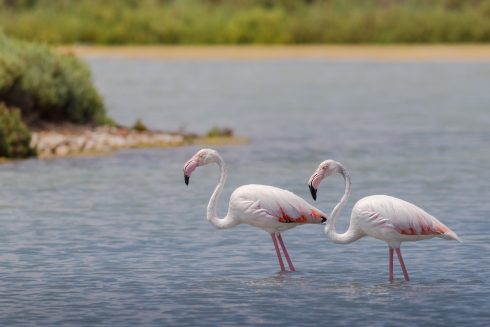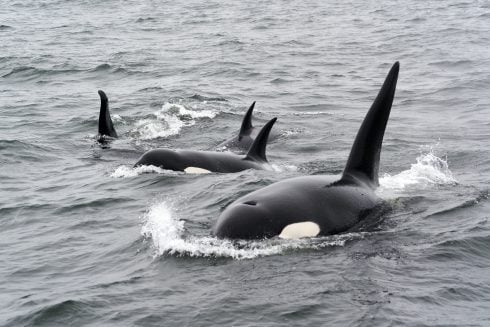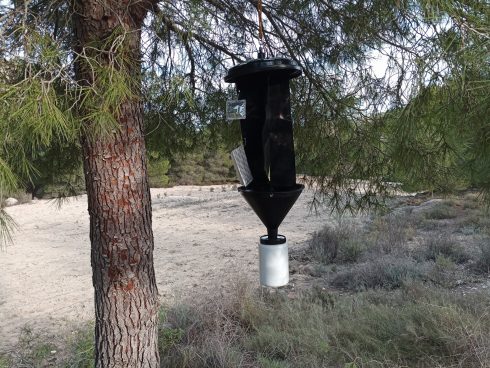THE wild mountain goats frequently found in herds across the mountain ranges of Andalucia are Spanish Ibex.
There were, until fairly recently, more subspecies spaced around the Iberian peninsula, but now only two exist. They are the Spanish ibex (Capra pyrenaica hispanica) and the Gredos ibex (Capra pyrenaica victoriae). Two are now extinct, the Portuguese ibex (Capra pyrenaica lusitanica) and the Pyrenean Ibex (Capra pyrenaica pyrenaica).
Ibex, which originate exclusively in the mountains of Iberia, are known as cabra montés in Spanish. They are generally shades of brown around the body with black markings on the chest, flanks and legs in the males, whereas the females are paler. The adult males can reach a weight of between 80-100 kilograms and are approximately double the size of the females. Colour and size variations can be noticed depending on their whereabouts within the peninsula. Both sexes have horns with a maximum length of 30 centimetres in the females, while those of the males grow to far greater dimensions, reaching 80 centimetres. In older males, the horns can be one metre in length. The horns curve back over their heads, the shape can be flattened or rounded and differs across the country, leading to confusion as to how many sub-species there are.
Further research and DNA testing may be done in the future to clear up this matter.
Generally shy creatures, these native ungulates (mammals with divided hooves) live around oak or pine woodland on the edges of open rocky areas of altitude ranging between 200 to 3,300 metres. They favour higher reaches during the warmer months when they can show considerable skill on climbing onto seemingly impossible cliffs and descend for improved shelter during the winter.
The position of herds on a mountain side will also be dictated by the available grazing and domestic stock or human interference.
During the rut males fight against each other for the alpha position and therefore the right to mate. Younger, weaker specimens will be filtered out by this process, which involves rearing up and clashing horns repeatedly. A typical age for taking over a group of females is eight years, even though the males are sexually mature at the age of three.
Having established one dominant male per herd, the breeding begins in November and continues throughout December. This dominant male will watch over his herd defending them by standing in a prominent position and rebuffing other male advances.
The gestation period is 23-24 weeks with most birthing in mid-May, coinciding with rich spring plant growth which aids good milk production.
Once at sexual maturity (18 months of age), the females will have one kid per year with twins being unusual. The females will wander off individually to search out a location with thick undergrowth for birthing. The females and young then collect into groups for higher security.
Very young kids are vulnerable to predation from foxes (Vulpes vulpes) and golden eagles (Aquila chrysaetos).
The lifespan of the ibex is, on average, around 14 years. In the autumn adults will separate from the juveniles. A dominant male, several subordinate males and numerous females form the adult herds. Juveniles will form smaller, mixed-sex groups.
These wild herds spend their days moving gradually across the mountain side browsing on oaks, primarily Holm’s oak (Quercus ilex) as well as grasses and flowering non-woody plants (forbs).
Within the group some may be watching out for danger, others resting or grooming. If startled a warning snort will alert all and the herd will flee, nimbly crossing scree slopes and dangerous precipices if needs be, following a leader to safety.
The Spanish ibex is by far the more numerous of the two remaining sub-species, but that does not mean that its existence is not under threat. An illness ravaged the numbers in the natural park of Sierra de Cazorla, Segura y Las Villas in eastern Andalucia as recently as 1997. Around 95 per cent of the population died from Sarcoptic mange (a skin disease caused by infection with the Sarcoptes scabiei mite).
Presence of mites and their eggs generates a massive allergic response in the skin, which developed in this instance at the beginning of the breeding season. It quickly spread, evolving to severe disease and terminating in death within three to four months. This demonstrates just how vulnerable their status can be. Isolation in this situation is necessary to prevent further spread of the disease.
Ironically, long-term isolation of populations can also cause a weakening of the bloodlines and therefore the ability to survive.
Compounding this problem is human interference, one of the threats to these handsome mammals is trophy collecting. Rather than being hunted for their meat, this is when the older and stronger herd leaders are shot simply for their heads. The impressive set of horns they bear are considered collectable by some. This practice can seriously upset the balance of the herd as unworthy young males may sidestep the normal hierarchical “survival of the fittest” system. Add to this agricultural expansion – causing habitat reduction – as well as the closing of natural wild corridors between sierras – preventing dispersal – are two further reasons for declining numbers.
The current population of Spanish ibex throughout Andalucía is near to 30,000 individuals, more than half of the entire population of Iberia.
The highest concentration is situated in the Sierra Nevada National Park in Granada with close to 14,000.
The Gredos Ibex (Capra pyrenaica victoriae)
The Gredos mountain chain, which is found in western Spain, has recently estimated figures of 8,ooo individuals with further, much smaller, populations such as those in nearby Batuecas. This sub-species is being introduced into the southern part of the Picos de Europa National Park in León.
The Pyrenean Ibex (Capra pyrenaica pyrenaica)
This mammal died out as recently as January 2000 for various reasons (many mentioned above), despite being a protected species since 1918. In fact, its preservation was the main reason for creating the first National Park in Spain, that of Ordesa in Aragón.
The Portuguese Ibex (Capra pyrenaica lusitanica)
This used to inhabit the mountains in the north of Portugal and also Galicia, Asturias and western Cantabria. It became extinct in 1892, mainly due to excessive hunting with the last recorded sightings being all females. They suffered year round human persecution despite hunting regulations, all further compounded by predation by wolves.
• Clive and Sue launched wildsideholidays.com as an advertising medium for ethically-minded nature holiday businesses in Spain. The aim is to provide an internet site on which people searching for this type of holiday can easily find what they are looking for.
• Together with iberianature.com, wildside holidays also run the iberianature forum (www.iberianatureforum.com) – the best online resource for learning about the nature of Iberia.







I have even seen (a dead )one in the Nogalte. Curious to know if any others are reported in this region.
This is an excellent article about the Iberian Ibex – extremely formative and concise and covered everything I wanted to find out about the Ibex, unlike so much information on the Internet. Having recently moved to Andalucia I was very keen to see some Ibex and saw my first (a female and a half-grown kid) on a recent car journey through the Sierra de Chaparral. I understand that there are Ibex in the Sierra de Huetor, close to where I live, but i have yet to see them here.
hi dears
i am looking for race called cashmere in spain wanna buy
hear from you
thankx